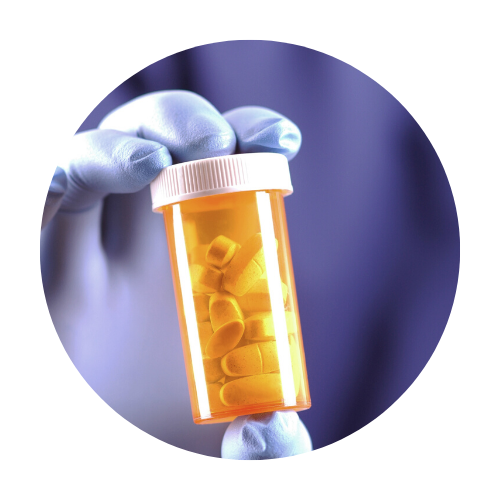Understanding & Navigating Mitochondrial Disease
What Is Mitochondrial Disease?
When mitochondria cannot convert food and oxygen into life-sustaining energy, cell injury and even cell death follow. When this process is repeated throughout the body, organ systems begin to fail and even stop functioning.
Why Do Mitochondria Malfunction?
There is still so much to uncover, but this is what we do know. Mitochondrial disease is an inherited condition. Your mitochondria can also be affected by other genetic disorders and environmental factors. You can learn more about the biology behind mitochondrial disease here.
Every 30 minutes a child is born who will develop a mitochondrial disease by age 10.
How Mitochondrial Disease Affects the Body
The parts of your body that need the most energy – heart, brain, muscles – are most affected by mitochondrial disease. An affected individual may exhibit a spectrum of symptoms.
Brain
developmental delays, dementia, migraines, autistic features, seizure, stroke, atypical cerebral palsy, learning disabilities

Muscles
weakness/failure, cramping, reflux, vomiting, constipation, diarrhea, hypotonia, dysmotility

Nerves
fainting, zero reflexes, heat/cold intolerance, pain

Pancreas
diabetes, pancreatic failure, parathyroid failure

Kidneys

Heart
defects, blockage, cardiomyopathy

Liver
low blood sugar, liver failure

Eyes
vision loss, ptosis, optic atrophy, strabismus, ophthalmoplegia, retinitis pigmentosa

Ears
hearing loss

Systemic
There are many types of mitochondrial disease. Each disorder produces a spectrum of abnormalities that can be confusing to both patients and physicians.
3+ malfunctioning organ systems is a red flag for mitochondrial disease.
Blood and urine to check levels of amino acids, acylcarnitines, lactate, pyruvate and urine organic acids
DNA testing
Muscle biopsy typically taken from the thigh
Shorten the Diagnostic Journey
See if you qualify for a no-cost genetic test.
Get Started →
Learn More about a Diagnosis
Find a Doctor
Mitochondrial Care Center: New Patient Guide
FAQ
How many individuals are affected by mitochondrial disease?
The exact number of individuals suffering from Mitochondrial Disease is hard to determine because so many who suffer from the disease are frequently misdiagnosed. One in 5,000 individuals has a genetic mitochondrial disease.
Can adults have mitochondrial disease?
While this disease primarily affects children, adult onset is becoming more common. The aging process itself may result from deteriorating mitochondrial function. There is a broad spectrum of metabolic, inherited and acquired disorders in adults that can be attributed to abnormal mitochondrial function.
When is someone with mitochondrial disease considered high risk?
Both children and adults are at a high risk for neurological and organ damage during times of extra stress on the body. This includes during and for the two weeks following an illness, starvation, dehydration, surgery, anesthesia, and IV antibiotic.
What is the prognosis for individuals affected by mitochondrial diseases?
That is a tough question to answer because the prognosis depends upon a variety of criteria. Some affected children and adults are living fairly normal lives. In other cases, affected children may not survive beyond their teenage years. Adult onset can result in drastic lifestyle and physical changes in a short amount of time.
How does UMDF support research to find a cure?
UMDF funds the best science around the globe, including millions of dollars in research to advance treatments and cures. Our Research Grant Program and accelerators program supports the top minds in mitochondrial medicine.
Educate Yourself at Mito University
Access videos, articles and resources to better navigate your journey.
As we fight to find a cure for mitochondrial disease, there are some treatments, vitamins and dietary supplements available to help alleviate symptoms and slow the disease progression. However, the effectiveness of current treatments varies greatly. Our best hope for progressing patient care is funding mitochondrial disease research and clinical trials.
1,000 to 4,000 children in the U.S. each year are born with a mitochondrial disease.

Join mitoSHARE: Mitochondrial Disease Registry
Help advance progress towards better diagnosis, treatments and cures.

Enroll in a Clinical Trial to Help Fuel Research for a Cure
See if you’re eligible to participate in clinical studies.

Raise Research Funds to Find More Effective Treatments
Financial gifts to the UMDF support programs to progress mitochondrial disease treatments.